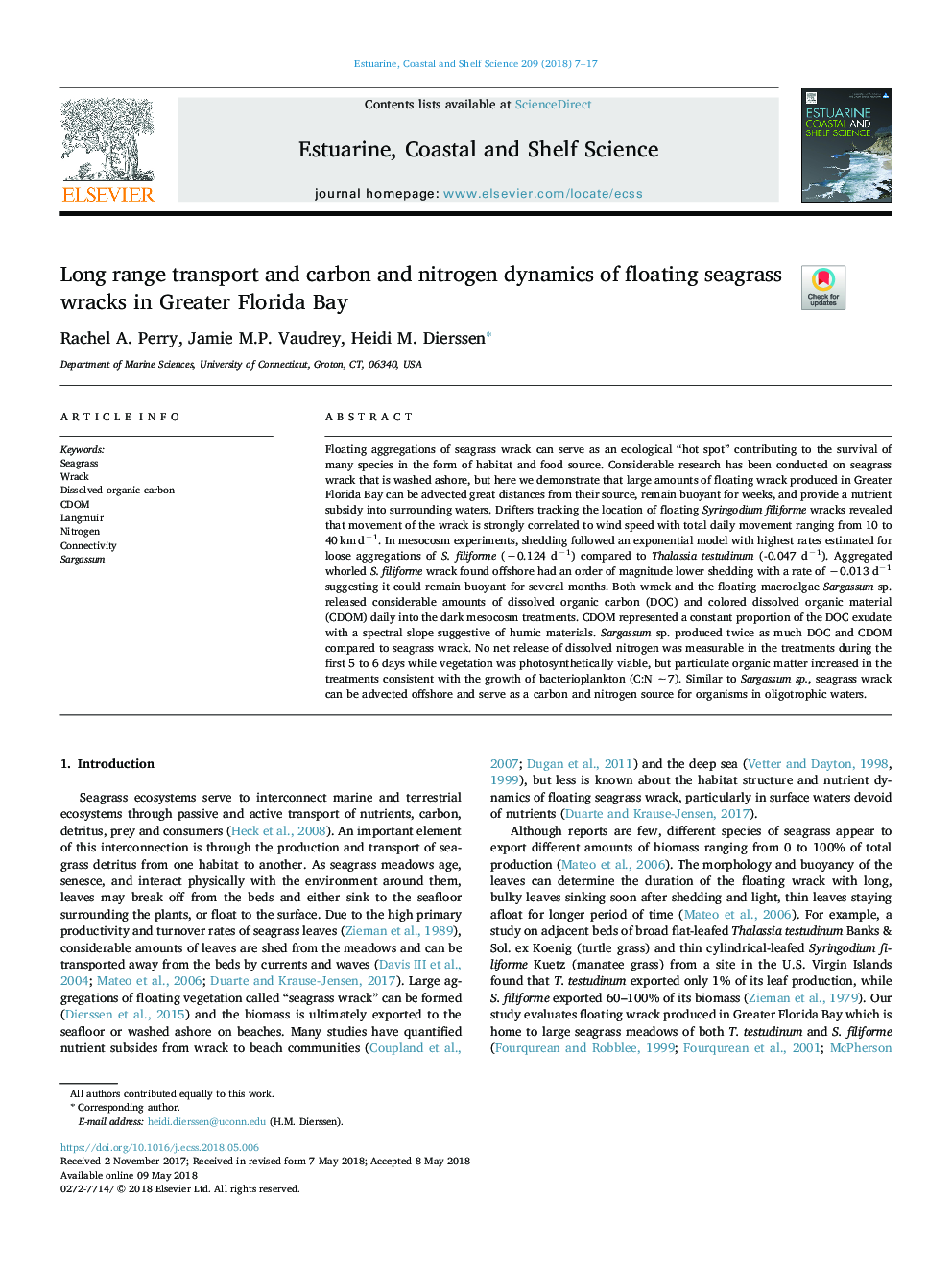| کد مقاله | کد نشریه | سال انتشار | مقاله انگلیسی | نسخه تمام متن |
|---|---|---|---|---|
| 8884684 | 1626593 | 2018 | 11 صفحه PDF | دانلود رایگان |
عنوان انگلیسی مقاله ISI
Long range transport and carbon and nitrogen dynamics of floating seagrass wracks in Greater Florida Bay
ترجمه فارسی عنوان
حمل و نقل در محدوده وسیع و دینامیک کربن و نیتروژن از جاده های شناور در خلیج فلوریدا
دانلود مقاله + سفارش ترجمه
دانلود مقاله ISI انگلیسی
رایگان برای ایرانیان
کلمات کلیدی
موضوعات مرتبط
مهندسی و علوم پایه
علوم زمین و سیارات
زمین شناسی
چکیده انگلیسی
Floating aggregations of seagrass wrack can serve as an ecological “hot spot” contributing to the survival of many species in the form of habitat and food source. Considerable research has been conducted on seagrass wrack that is washed ashore, but here we demonstrate that large amounts of floating wrack produced in Greater Florida Bay can be advected great distances from their source, remain buoyant for weeks, and provide a nutrient subsidy into surrounding waters. Drifters tracking the location of floating Syringodium filiforme wracks revealed that movement of the wrack is strongly correlated to wind speed with total daily movement ranging from 10 to 40â¯kmâ¯dâ1. In mesocosm experiments, shedding followed an exponential model with highest rates estimated for loose aggregations of S. filiforme (â0.124 dâ1) compared to Thalassia testudinum (-0.047 dâ1). Aggregated whorled S. filiforme wrack found offshore had an order of magnitude lower shedding with a rate of â0.013 dâ1 suggesting it could remain buoyant for several months. Both wrack and the floating macroalgae Sargassum sp. released considerable amounts of dissolved organic carbon (DOC) and colored dissolved organic material (CDOM) daily into the dark mesocosm treatments. CDOM represented a constant proportion of the DOC exudate with a spectral slope suggestive of humic materials. Sargassum sp. produced twice as much DOC and CDOM compared to seagrass wrack. No net release of dissolved nitrogen was measurable in the treatments during the first 5 to 6 days while vegetation was photosynthetically viable, but particulate organic matter increased in the treatments consistent with the growth of bacterioplankton (C:N â¼7). Similar to Sargassum sp., seagrass wrack can be advected offshore and serve as a carbon and nitrogen source for organisms in oligotrophic waters.
ناشر
Database: Elsevier - ScienceDirect (ساینس دایرکت)
Journal: Estuarine, Coastal and Shelf Science - Volume 209, 30 September 2018, Pages 7-17
Journal: Estuarine, Coastal and Shelf Science - Volume 209, 30 September 2018, Pages 7-17
نویسندگان
Rachel A. Perry, Jamie M.P. Vaudrey, Heidi M. Dierssen,
